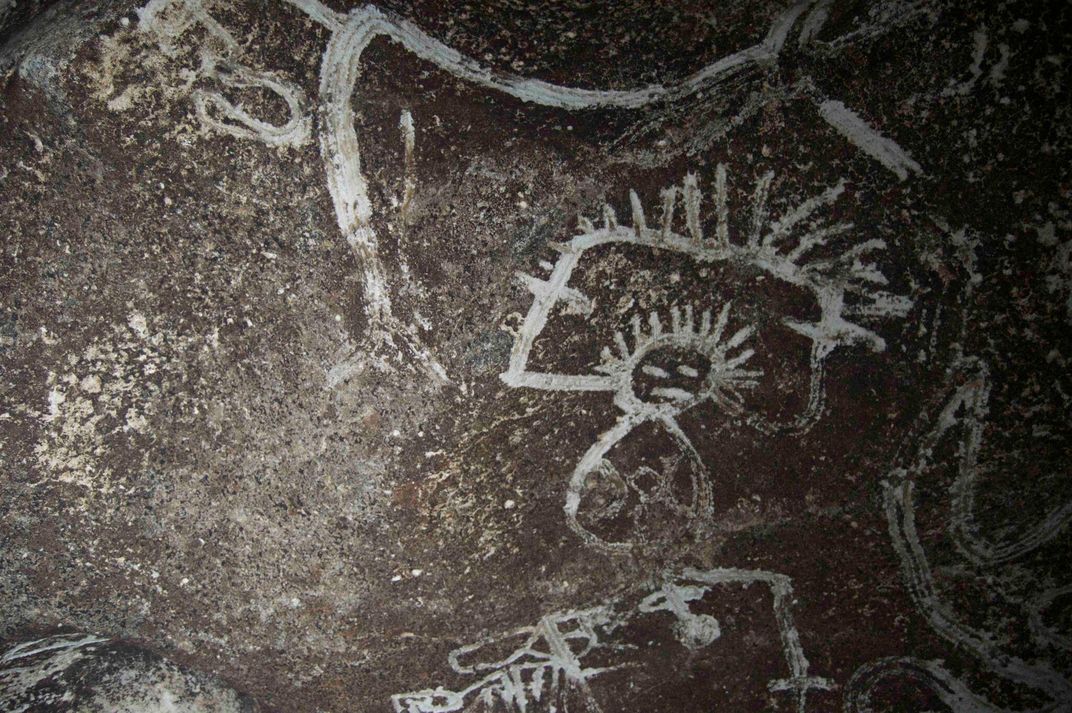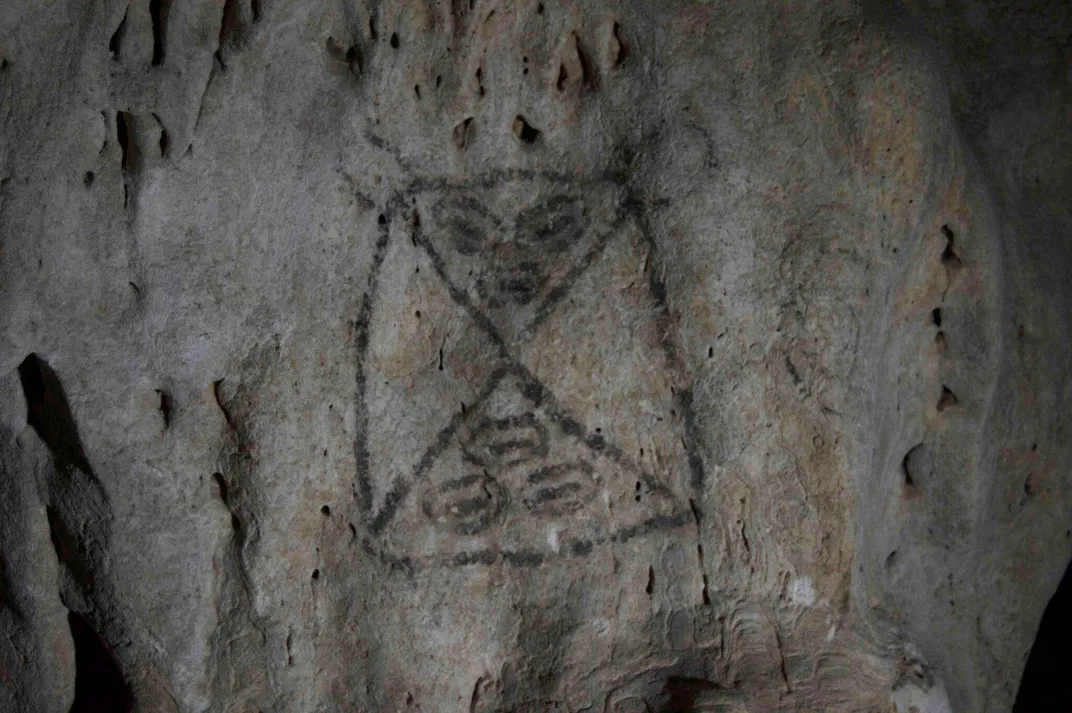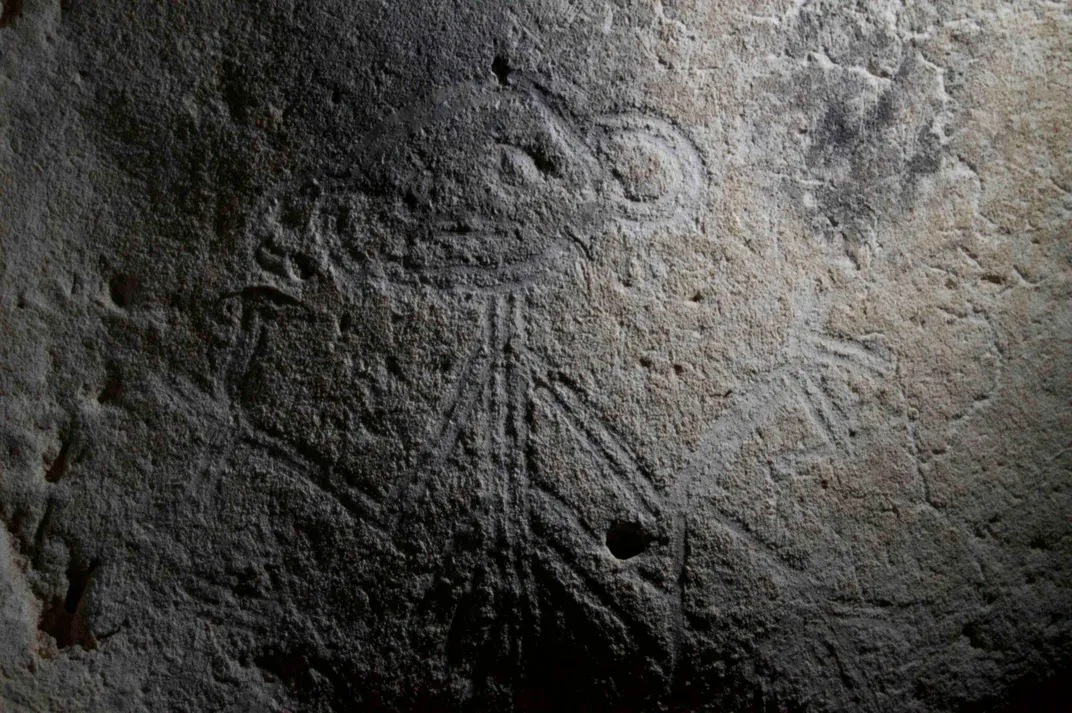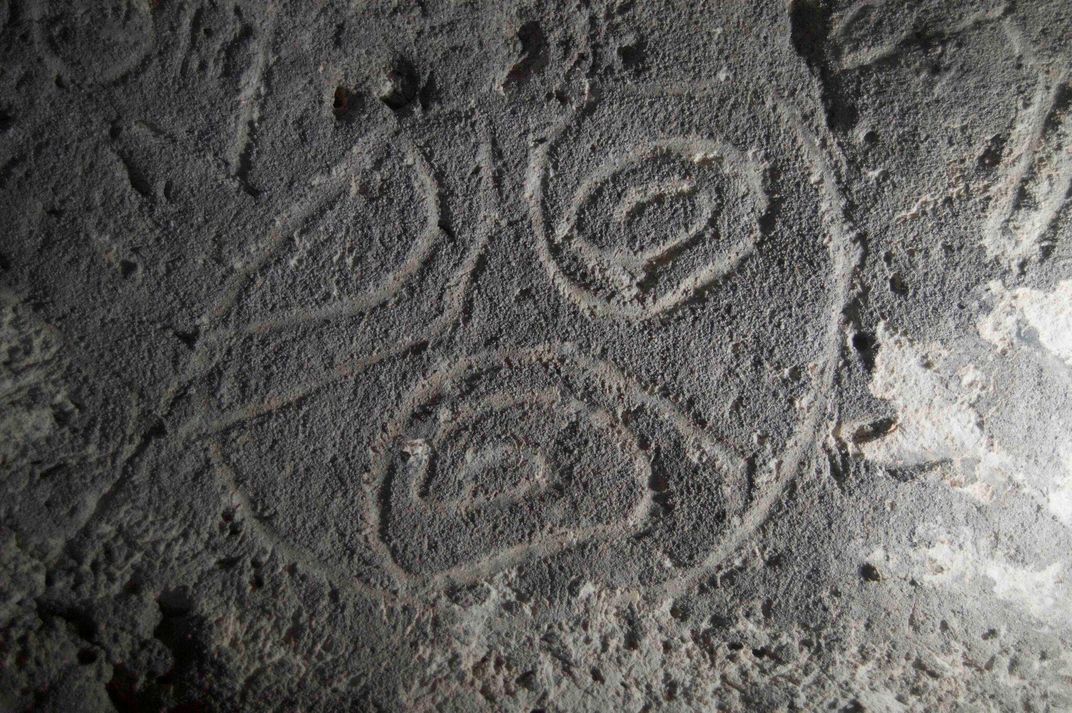Archaeologists Date Pre-Hispanic Puerto Rican Rock Art for the First Time
A new analysis looks at the thousands of images found in caves on Mona Island, a spiritual hub for the Taino culture
Researchers have found pre-Hispanic rock art in a vast cave system on Puerto Rico’s Mona Island that dates back to at least the 13th century, reports Hannah Osborne at Newsweek. The new research, published in the Journal of Archaeological Science, includes the first dates for the rock art as well as interpretations of some of the thousands of drawings and etchings found in the island’s 30 cave systems.
A team from the University of Leicester, the British Museum, the British Geological Survey and Cambridge University spent three years cataloguing all types of rock art in the caves, including paintings and drawings as well as images created in the soft rock using fingertips. The images include human figures, animals and abstract designs.
Osborne reports that the seven-by-four mile Mona Island is now uninhabited, but it was home to some of the Caribbean's early colonizers from 3,000 B.C. The researchers are the first to date pre-Hispanic rock art in the Caribbean. Alice Samson of the University of Leicester who co-authored the study tells Osborne that the small sample studied dated the art well before the arrival of European arrivals. The research team hopes to use the methods tested in the study to date more of the images in future analysis.
It’s believed that the caves were a spiritually important place for the Taíno people, who once inhabited the island (and whose descendants are still populating the Caribbean and United States today). “For the millions of indigenous peoples living in the Caribbean before European arrival, caves represented portals into a spiritual realm, and therefore these new discoveries of the artists at work within them captures, the essence of their belief systems and the building blocks of their cultural identity,” co-author Jago Cooper, curator of the Americas at the British Museum, says in a press release.
Victor Serrano, a member of the student research team that worked on the study says the vast network of images served as a method of communication between people visiting the island and between generations. “Most of the precolonial pictographs are in very narrow spaces deep in the caves, some are very hard to access, you have to crawl to get to them, they are very extensive and humidity is very high but it is extremely rewarding,” he says. “Imagine a social networking site, where instead of having a page with posts of people here you have an actual cave wall or roof full of different pictographs.”
Last year, the same team of researchers found that even after the arrival of Europeans, Taíno people created art in the caves, even finding an overlap of native and Christian symbols in one of Mona’s caves–showing that the two cultures had an exchange of ideas, at least initially.




